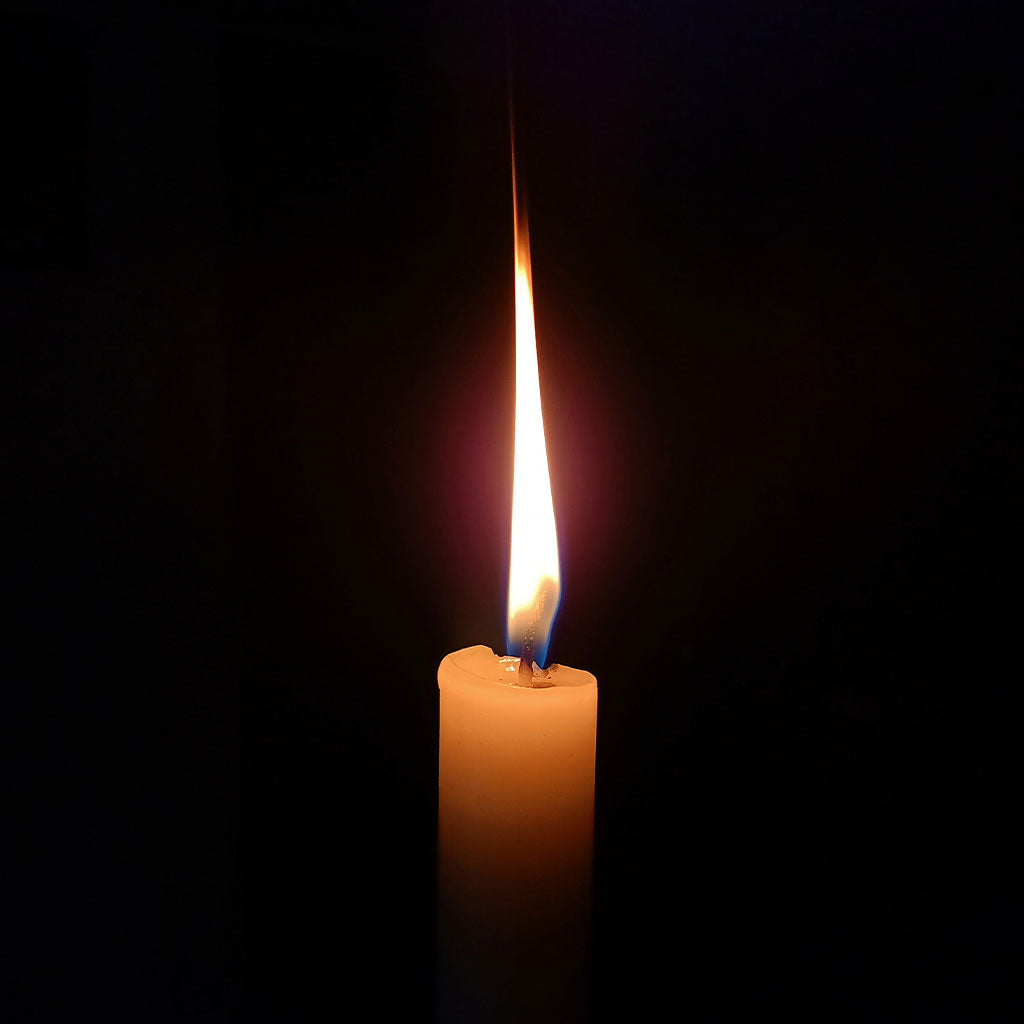Inspired for an Adventure? Check out Beef Stroganoff - Pouch and Beef Stew - Pouch
Free Ground Shipping On All Orders
Over 2,100 Reviews
Add description, images, menus and links to your mega menu
A column with no settings can be used as a spacer
Link to your collections, sales and even external links
Add up to five columns
Add description, images, menus and links to your mega menu
A column with no settings can be used as a spacer
Link to your collections, sales and even external links
Add up to five columns


Ah, nothing like a good old-fashioned power outage to remind you how amazing it is to have light, heat, and Wi-Fi at our fingertips. It’s just a flip of a switch or a twist of the thermostat away! It's easy to take these modern conveniences for granted until something interrupts it all. A natural disaster, a fried power line, a blown transformer, or yes, even a rogue squirrel can bring everything to a halt.
Most blackouts are over before you’ve finished searching for candles, but sometimes they drag on for a week or longer. A long-term power outage can quickly become more than an inconvenience. Such extended outages can be dangerous, even life-threatening, if you’re caught unprepared.
So, how should you prepare for an extended power outage? Having sufficient supplies on hand and knowing how to keep your basic needs covered makes all the difference. Assembling a power outage survival kit can turn these inevitable interruptions into something much more manageable.
We will walk you through the fundamentals of how to prepare for power outages, from must-have gear to smart strategies for getting through those flickering, flashlight-lit days. We'll cover all the big essentials, including lighting, communication, sanitation, first aid, food, and temperature control.
Adding an Emergency Preparedness Kit to Your Power Outage Supplies
Among your critical power outage supplies should be an emergency preparedness kit. If you’re a regular reader of the Mountain House blog, you’re familiar with the importance of such a kit, but it’s worth running through the basics again—especially because it’s one of those responsibilities we tend to think about attending to, but don’t always get around to following through on.
According to the Federal Emergency Management Agency (FEMA), your emergency kit should be equipped to support your household for at least 72 hours off-grid. That means a three-day supply of water—a gallon per person per day for drinking and sanitary purposes—and a three-day supply of non-perishable food. (Need a refresher on long-term food storage? We’ve got a whole blog post dedicated to that.)
Your emergency kit should also include:
-
A first aid kit and any necessary medications
-
Flashlights or hand-crank lanterns with extra batteries
-
A battery-powered or hand-crank radio, ideally with NOAA weather alerts
-
A whistle for signaling
-
A backup cell phone or power bank with charger
-
Moist towelettes and plastic bags for sanitation
-
Warm clothing, blankets, and sleeping bags for cold-weather outages
-
A manual can opener for other non-perishable goods
When it comes to shelf-stable meals for your kit, Mountain House freeze-dried food is a great option for power outages. Our Emergency Food Supply Kits make long-term food storage simple and straightforward, whether you’re prepping just for yourself or for a whole family. Our meals are lightweight, come in easy-to-store packaging, and only require water (preferably hot) to prepare.
We have a pre-configured three-day food supply kit along with longer options like our 14-day Emergency Food Supply that will provide you with more flexibility for dealing with longer power outages. We also offer the option to build your own emergency food kit so you can be sure it’s filled with your favorite recipes and meals specific to your dietary needs.
Remember to check and refresh your emergency kit regularly to ensure everything’s still functional and within its shelf life. Want to learn more about putting together emergency preparedness kits? Check out this FEMA factsheet to build a kit that’s ready for any power supply disruption.
Long-Range Preparation for Possible Power Outages
Emergency preparedness goes beyond just a well-stocked kit—it’s also about making smart upgrades and creating a home that can better handle a power outage. Taking a few proactive steps now can make a huge difference when the lights go out for an extended period.
Upgrade Your Home’s Resilience
-
Improve insulation: A well-insulated home helps retain heat in the winter and cool air during the summer if your air-conditioning or heating system fails.
-
Protect your pipes: Insulate water pipes in unheated areas like basements or crawlspaces to help prevent freezing and bursting during winter blackouts.
-
Install solar panels: As an alternative power supply, solar panels with battery storage can provide ongoing electricity even when the grid is down.
-
Install carbon monoxide detectors: If you plan to use a portable generator or other gas-powered equipment, install carbon monoxide detectors on every level of your home—especially near sleeping areas—to help ensure your safety.
Invest in Backup Essentials
-
Portable generator: A portable generator can power critical appliances, from fridges to medical devices, during an outage.
-
Landline phone: Consider installing a corded landline so you have an alternative means of communication besides a cellphone.
-
Alternative power sources for devices: Keep power banks or solar-powered chargers for phones and small electronics.
These long-range planning steps help ensure you’re not just reacting to a power outage, but actively prepared to ride it out with comfort and safety.
Steps to Take Before an Upcoming Potential Blackout
You can’t predict a power outage, but weather forecasts can give you a heads-up when one is likely. If severe thunderstorms, ice storms, blizzards, high winds, floods, or similar phenomena are expected, you should start preparing immediately for a potential loss of power.
Begin by gathering your emergency preparedness supplies. Check on that emergency kit (again) and locate other flashlights, lanterns, and extra batteries so you’re ready when it comes to illumination. Charge your cell phone, computer, and other electronics. Make sure your car has at least a half-tank of gas (remember, gas-station pumps may not be working during a power outage).
To protect your food supply, make or purchase ice and freeze water in containers to help keep your freezer contents cold longer. And speaking of, crank your fridge and freezer to their coldest settings. If you think your water supply may be impacted, fill jugs, pots, pans, and other containers with water as well as the bathtub (to be used for manually flushing the toilet and other sanitary tasks).
Make sure you and other family members know how to shut off the main water valve to your house. If you have an electric garage door, confirm where the manual release lever is and how to use it. If you or a member of your household relies on a medical device that requires electrical power, come up with a plan of action in the event of a blackout. You should also notify your utility company if it’s a life-support system. (FEMA has more detailed recommendations on emergency preparedness for those with medical conditions or disabilities.)
Lastly, if you have a fireplace or woodstove, be sure to keep a good supply of wood on hand in case you need it for heat during a prolonged outage in colder weather.
What to Do During a Blackout
To protect your electronics during a power outage, unplug computers and other electronics and turn off appliances so they’re protected against the temporary surges that can occur when power comes back on. Leave a light on, however, so you know when electricity's been restored.
When it comes to lighting, skip the candles and opt for battery-powered or hand-crank flashlights and lanterns. During colder temperatures, use a woodstove or fireplace (if you have one) to keep at least one room toasty. Wear extra layers to stay warm. And in the event of any winter outage, keep your water pipes in mind: Swaddle them in insulation, and if it’s really frigid outside keep the taps trickling to lessen the chance of a frozen pipe (which may burst). In an extended blackout during cold weather, you may want to shut off water to your house entirely; be sure to drain the pipes if you do so.
Generators can be lifesavers during extended blackouts, but they must be used carefully. Always operate them outdoors in a well-ventilated area away from your house’s windows or air intakes. Make sure you’re using a power cord of the proper rating, and only plug in appliances that use less wattage than the generator’s output. (The American Red Cross offers more detailed tips on generator safety.)
How to Cook Without Electricity
Gas stoves should still work during a power outage, however, if you do not have one, you can use a charcoal or gas grill or a camp stove to prepare food during a power outage, but only outdoors—never inside. A fireplace or woodstove can serve as an indoor cooking receptacle: For instance, you can cook meat or vegetables on skewers or wrapped in foil and placed on coals.
A less desirable option is a fondue pot or a candle warmer, but make sure you’re exercising due caution at all times. It’s important to conserve fuel and water during a power outage, so choose quick-cooking and one-pot meals. Here again, Mountain House entrees, breakfasts, and desserts prove their worth: All you need to do is add hot water!
Power Outage Tips for Your Fridge and Freezer
When the power is out, minimize opening your refrigerator and freezer in an effort to keep foods inside as cold as possible. A full, unopened freezer can keep items frozen for 48 hours, a half-full one for 24 hours. An unopened fridge can maintain perishable products at a safe temperature for as long as six hours.
If you’re facing the situation of no electricity for a week or more, you’re obviously going to need to work through your freezer and fridge reserves. Naturally, you’ll want to eat or at least cook the most perishable items—raw meat, for instance—first.
Be Ready with Mountain House
Chances are, you’ll probably run into a power outage or two at some point in your life—maybe a lot of them if you live in a storm-prone area.
Having an emergency supply kit at the ready, insulating water pipes, and buying a generator are all tasks that can seem like a burden in the context of your everyday routine, but they can be lifesavers when the lights go out. And don't forget to stock up on those Mountain House supplies! A comforting, delicious, and easy meal can go a long way in lifting spirits during a stressful situation.

How to Rotate Emergency Food: FIFO and Other Rotation Methods

The First 72 Is on You: Survival Kit Checklist + Printable PDF


Stay Hungry for Adventure
Sign Up for Delicious Outdoor Meals & Exclusive Offers!
By clicking ‘Join Now’, I agree to the Terms of Service and Privacy Policy.


Join the adventure
©2025 Mountain House — All Rights Reserved.
Your Cart is Empty
Continue ShoppingYour Cart
Subtotal
$0.00
EXPRESS PAYMENT METHODS AVAILABLE IN CHECKOUT
Taxes and Shipping Calculated at Checkout
Your ExpertVoice deal.
$[Deal Price]
$[Original Price]
Discount applied at checkout.
On sale now — lower than your ExpertVoice discount.
Not eligible for ExpertVoice discount.














